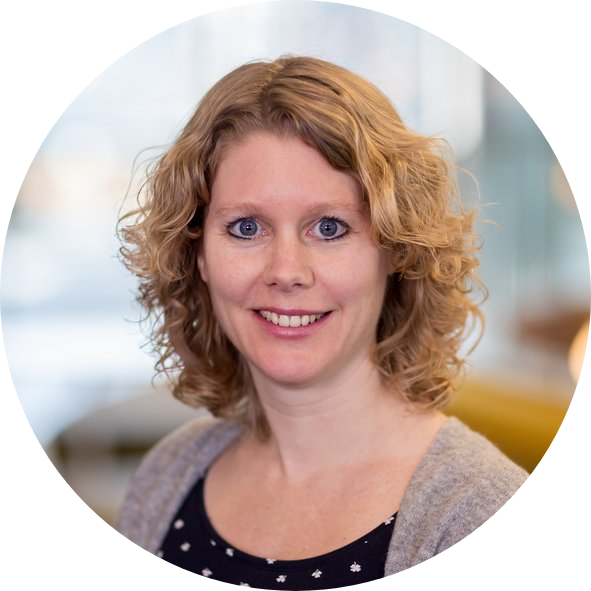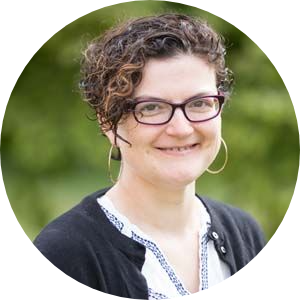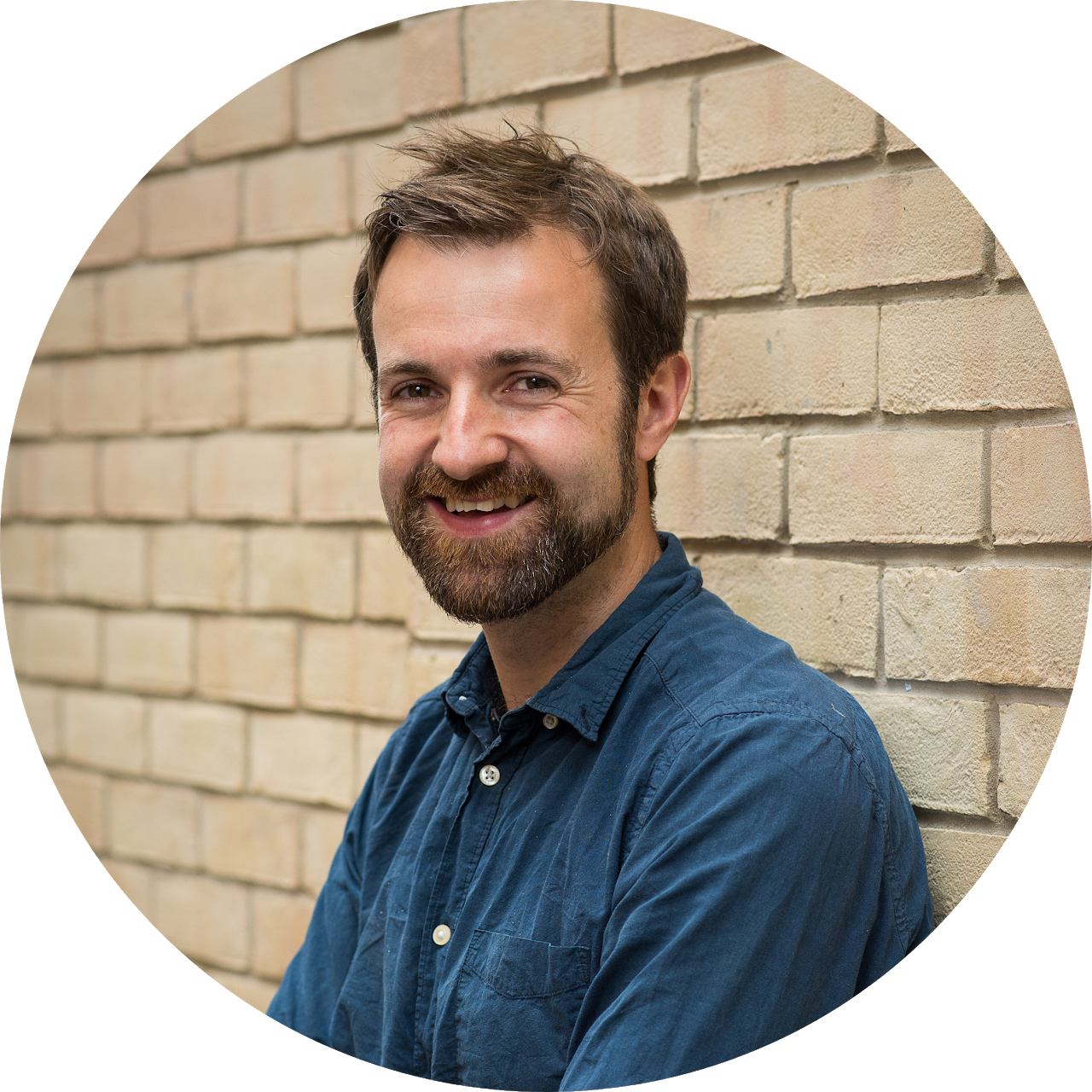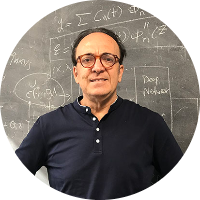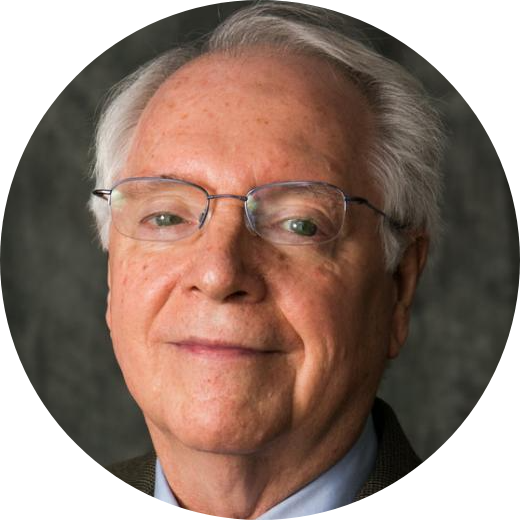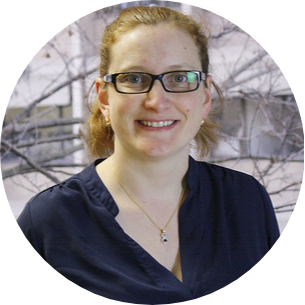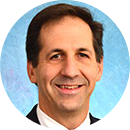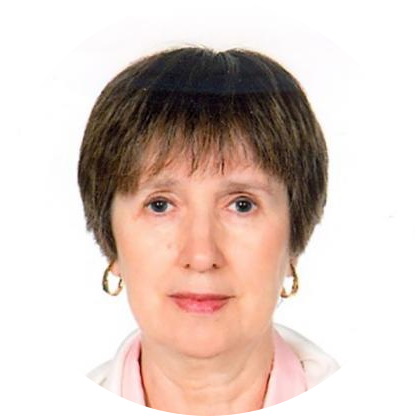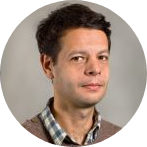Plenary speakers
Plenary-Sunday
Introduced by: Roeland MerksSunday, June 13 at 09:00am (PDT)
Sunday, June 13 at 05:00pm (BST)
Monday, June 14 01:00am (KST)
Sandra Loerakker
Associate Professor of Biomedical Engineering
Eindhoven University of Technology, Netherlands
The contribution of computational mechanobiology to accelerating the clinical translation of cardiovascular tissue engineering
Abstract:
Cardiovascular tissue engineering aims at replacing diseased or malformed cardiovascular tissues by living tissues that can grow and remodel in line with the recipient's demands. Despite several promising results, previous studies have also shown that the in vivo development or adaptation of engineered cardiovascular tissues is often variable and suboptimal. A mechanistic understanding of tissue development and adaptation is therefore needed to understand how these processes can and should be guided in order to ensure long-term tissue functionality. In our research, we focus on developing computational models to understand and predict how mechanical factors drive the growth and remodeling of cardiovascular tissues, with the ultimate aim to computationally predict what initial properties of engineered constructs will lead to a successful in vivo performance. In this talk, I will discuss a range of computational models that we have developed to describe mechano-driven cardiovascular adaptation, and show how we used these models to successfully propose a solution for preventing one of the most common failure modes of tissue-engineered heart valves in vivo.
Plenary-01 : John Jungck Prize
Introduced by: Heiko Enderling, incoming SMB PresidentMonday, June 14 at 08:15am (PDT)Monday, June 14 at 04:15pm (BST)Tuesday, June 15 12:15am (KST)
Carrie Diaz Eaton
Associate Professor of Digital and Computational Studies
Bates College, USA
Systems Biology to Systemic Racism: Exploring the language of STEM cultures
Abstract:
I reflect on how my grounding as a mathematical biologist has helped me uniquely understand and address the challenges in interdisciplinary and inclusive STEM education, particularly with respect to its language and culture. The key to understanding systems biology and racism share the same intellectual undergirding as complex adaptive systems - an understanding of the structure of systems, how they are shaped over time by internal and external factors, and the levers that are effective for bringing about change. We also know that our (sub)disciplinary culture and its language can affect our ability to collaborate and learn in these “wicked problem” and interdisciplinary contexts. Our language can be used to foster understanding and unity, or it can be used to create siloes that work against collaborative research and education. I propose that the community of mathematical biologists is uniquely positioned to make a difference in creating both an interdisciplinary AND inclusive STEM education and explore research which examines our own discipline in this light.
Plenary-02
Introduced by: Suzzane LenhartMonday, June 14 at 04:15pm (PDT)Tuesday, June 15 at 12:15am (BST)Tuesday, June 15 08:15am (KST)
Denise Kirschner
Professor Medical School and Department of Microbiology and Immunology
University of Michigan Medical School, USA
Tools and approaches to build and analyze multiscale computational models in biology -TB as a case study
Abstract:
In this talk, I will give an overview of our multi-scale models that we have developed to study a number of aspects of the immune response to infection. Scales that we explore range from molecular to the whole-host scale. We are also able to study virtual populations and perform simulated clinical trials. We apply these approaches to study Tuberculosis, the disease caused by inhalation of the bacteria, Mycobacterium tuberculosis. It has infected 2 billion people in the world today, and kills 1-2 million people each year, even more than COVID-19. Our goal is to aid in understanding infection dynamics, treatment and vaccines to improve outcomes for this global health burden. I will discuss our frameworks for multi-scale modeling, and the analysis tools and statistical approaches that we have honed to better understand different outcomes at different scales.
Plenary-03 : Lee A. Segel Prize for Best Paper & Student Paper
Introduced by: Ruth BakerTuesday, June 15 at 01:15am (PDT)Tuesday, June 15 at 09:15am (BST)Tuesday, June 15 05:15pm (KST)
Presentations from Paper Prize Winners
Best paper:
Link to best paperPaper: "A Multi-stage Representation of Cell Proliferation as a Markov Process" by Christian A. Yates*, Matthew J. Ford, Richard L. Mort
Adventures in developmental biology.
In this talk I will give a number of short vignettes of work that has been undertaken in my group over the last 15 years. Mathematically, the theme that underlies our work is the importance of randomness to biological systems. I will explore a number of systems for which randomness plays a critical role. Models of these systems which ignore this important feature do a poor job of replicating the known biology, which in turn limits their predictive power. The underlying biological theme of the majority our work is development, but the tools and techniques we have build can be applied to multiple biological systems and indeed further afield. Topics will be drawn from, locust migration, zebrafsh pigment pattern formation, mammalian cell migratory defects, appropriate cell cycle modelling and more. I won't delve to deeply into anyone area, but am happy to take question or to expand upon of the areas I touch on.
Best student paper:
Link to best student paperPaper: "A Bayesian Sequential Learning Framework to Parameterise Continuum Models of Melanoma Invasion into Human Skin" by Alexander P. Browning*, Parvathi Haridas, Matthew J. Simpson
Tackling biological and model complexity through a sequence of experiments
Biological and model complexity is a major challenge in mathematical biology. While more complex models capture the finer details in biological processes, they typically suffer from practical non-identifiability when calibrated to typical experimental measurements. We demonstrate this for a simple model of melanoma invasion into human skin, where it is challenging to extract detailed biological measurements from experimental images. We demonstrate an approach to alleviate this problem through a Bayesian sequential learning framework, where a sequence of mathematical and experimental models are applied in tandem to gradually learn about key components of the process and calibrate the full mathematical model. Whereas parameter estimates from a single melanoma invasion experiment are meaningless, those from our sequential learning approach are well-defined and describe cell behaviour throughout the sequence of experiments we consider.
Plenary-04
Introduced by: Mark AlberTuesday, June 15 at 08:15am (PDT)Tuesday, June 15 at 04:15pm (BST)Wednesday, June 16 12:15am (KST)
George Karniadakis
Charles Pitts Robinson and John Palmer Barstow Professor of Applied Mathematics
Brown University, USA
BINNs: Biophysics-Informed Neural Networks
Abstract:
We will present a new approach to develop a data-driven, learning-based framework for predicting outcomes of biophysical systems and for discovering hidden mechanisms and pathways from noisy data. We will introduce a deep learning approach based on neural networks (NNs) and on generative adversarial networks (GANs). Unlike other approaches that rely on big data, here we “learn” from small data by exploiting the information provided by the mathematical physics, e.g.., conservation laws, reaction kinetics, etc,. which are used to obtain informative priors or regularize the neural networks. We will demonstrate how we can train BINNs from multifidelity/multimodality data, and we will present several examples of inverse problems, e.g., in systems biology for diabetes and in biomechanics for non-invasive inference of thrombus material properties. We will also discuss how operator regression in the form of DeepOnet can be used to accelerate inference based on historical data and only a few new data, as well its generalization and transfer learning capacity.
Plenary-05 : C. A. Akira Okubo Prize
Introduced by: Denise Kirschner, Chair of the SMB C. A. Akira Okubo Prize CommitteeTuesday, June 15 at 04:15pm (PDT)Wednesday, June 16 at 12:15am (BST)Wednesday, June 16 08:15am (KST)
Michael Savageau
Distinguished Research Professor of Microbiology & Molecular Genetics and Biomedical Engineering
University of California, Davis, USA
What Can Molecular Mechanisms Tell Us About the Distribution of Mutant Phenotypes and Their Evolution?
Abstract:
My research in Biochemical Systems Theory in collaboration with colleagues has shown that the architecture of mechanistic models can predict numerous properties within and among biochemical phenotypes without knowledge of the underlying biochemical kinetic parameters. In the past decade, this research led to the development of a novel phenotype-centric modeling strategy with several advantages over the conventional simulation-centric approach. Here I report on work done in collaboration with Miguel Valderrama-Gómez extending the phenotype-centric approach to address one of the most fundamental problems in population genetics and evolution: predicting the distribution of phenotype diversity generated by mutation and available for innovation by selection. I show that minimal knowledge of the molecular system allows prediction of phenotype-specific mutation rate constants and equilibrium distributions of phenotype diversity in populations undergoing steady-state exponential growth. As a proof-of-principle, I provide a case study involving a small molecular system, a primordial circadian clock, and suggest experimental approaches for testing the theory.
Plenary-06 : Leah Edelstein-Keshet Prize
Introduced by: Ellen Baake, President of ESMTBWednesday, June 16 at 01:15am (PDT)Wednesday, June 16 at 09:15am (BST)Wednesday, June 16 05:15pm (KST)
Jennifer A. Flegg
Associate Professor in Applied mathematics in the School of Mathematics and Statistics
University of Melbourne, Australia
Data-driven spatiotemporal mathematical models to support malaria elimination
Abstract:
The effect of malaria on the developing world is devastating. Each year there are more than 200 million cases and over 400000 deaths, with children under the age of five the most vulnerable. Ambitious malaria elimination targets have been set by the World Health Organization for 2030. These involve the elimination of the disease in at least 35 countries. However, these malaria elimination targets rest precariously on being able to treat the disease appropriately; a difficult feat with the emergence and spread of antimalarial drug resistance. In this talk, I will introduce several statistical and mathematical models that are being used to help support malaria elimination, including monitoring the emergence and spread of antimalarial drug resistance. Results will be presented from a Bayesian geostatistical model that have generated spatiotemporal predictions of resistance based on prevalence data available only at discrete study locations and times. In this way, the model output provides insight into the spatiotemporal spread of resistance that the discrete data points alone cannot provide. I will discuss how the results of these models have been used to update public health policy and support ongoing malaria elimination efforts.
Plenary-07
Introduced by: Santiago SchnellWednesday, June 16 at 08:15am (PDT)Wednesday, June 16 at 04:15pm (BST)Thursday, June 17 12:15am (KST)
Timothy Elston
Professor of Pharmacology
University of North Carolina, USA
Models and methods for studying cell polarity establishment and gradient sensing
Abstract:
Cells polarize their growth or movement in the direction of chemical gradients in many different physiological contexts. A key driver of polarity is the Rho GTPase Cdc42, which when activated becomes clustered or concentrated at polar sites. We present models to describe the polarity process and the mechanisms that allow yeast to reorient their polarity site toward chemical gradients. We also present a novel approach for performing spatial Gillespie simulations of the polarization process with improved accuracy. Finally, we present preliminary results that suggest the mechanisms that underlie polarity establishment in yeast may also play a role in the early events of phagocytosis.
Plenary-08 : Arthur Winfree Prize
Introduced by: Alexander Anderson, President of SMBWednesday, June 16 at 04:15pm (PDT)Thursday, June 17 at 12:15am (BST)Thursday, June 17 08:15am (KST)
Leah Edelstein-Keshet
Professor of Mathematics
University of British Columbia, Canada
From intracellular signaling and spiral waves to patterns of cell migration
Abstract:
In the 1970's, 80's and 90's, Art Winfree and many of his contemporaries analyzed intriguing spiral waves in several kinds of excitable systems, including chemical reactions, aggregation patterns of social amoebae, and electrical activity in cardiac tissue. Meanwhile, biological imaging methods developed to the point that high resolution images reveals spiral waves of activity of proteins inside cells. In this talk, I will survey some of the cell-migration models developed in my group, with emphasis on the way that intracellular signaling regulates cell polarity, cell shape, and cell motility of eukaryotic cells. While core polarity regulation can be explained by the biology of specific central regulatory proteins (small GTPases), that regulatory circuit is tuned by feedback from other proteins, from the cell's environment (extracellular matrix), and from chemical or mechanical stimuli. I will describe our recent interest in spiral waves of protein activity and the influence of such waves on the migration patterns of invasive melanoma cells.
Plenary-09
Introduced by: Jaekyoung KimThursday, June 17 at 01:15am (PDT)Thursday, June 17 at 09:15am (BST)Thursday, June 17 05:15pm (KST)
Anita Layton
Professor of Applied Mathematics, Computer Science, Pharmacy, and Biology
University of Waterloo, Canada
His or Her Mathematical Models - Understanding Sex Differences in Physiology
Abstract:
Imagine someone having a heart attack. Do you visualize the dramatic Hollywood portrayal of a heart attack, in which a man collapses, grabbing his chest in agony? Even though heart disease is the leading killer of women worldwide, the misconception that heart disease is a men’s disease has persisted. A dangerous misconceptions and risks women ignoring their own symptoms. Gender biases and false impressions are by no means limited to heart attack symptoms. Such prejudices exist throughout our healthcare system, from scientific research to disease diagnosis and treatment strategies. A goal of our research program is to address this gender equity, by identifying and disseminating insights into sex differences in health and disease, using computational modeling tools.
Plenary-10
Introduced by: Mohit Kumar JollyThursday, June 17 at 08:15am (PDT)Thursday, June 17 at 04:15pm (BST)Friday, June 18 12:15am (KST)
David Basanta
Integrated Mathematical Oncology
Moffit Cancer Center, USA
Cancer evolution in context
Abstract:
Rightfully, cancer evolution is increasingly becoming the focus of many of the efforts devoted to understanding cancer growth and progression as well as treatment. Somatic evolution is responsible for the accumulation of hallmarks that characterize the transformation of neoplastic cells into fully formed aggressive cancers. Traditionally, efforts to characterize somatic evolution have leaned heavily on the former as the tools to do so were readily available to cancer biologists. The latter, due to its complexity requires new approaches in which mathematical modeling are proving to be a key part. In this talk I will describe a variety of mathematical models we have used to elucidate various aspects of selection on cancer initiation, metastasis and the emergence of treatment resistance. A key aspect of many of these models is that they aim to capture the ecology of the tumor environment, a process which requires the close collaboration with cell biologists such as many of my colleagues at the Moffitt Cancer Center.
